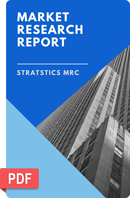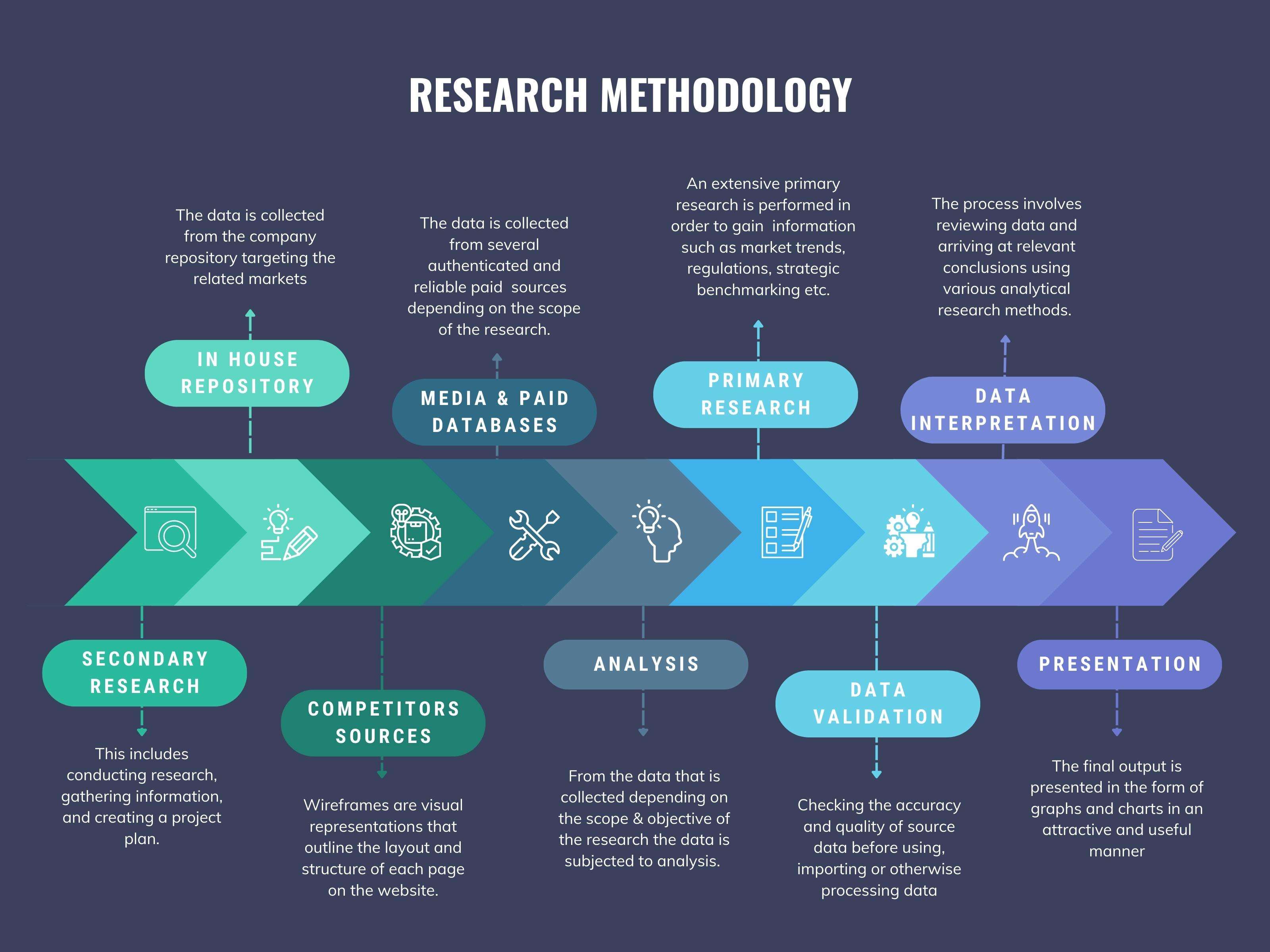
Robot End Effector Market
Robot End-Effector- Global Market Outlook (2019-2027)

According to Stratistics MRC, the Global Robot End-Effector Market is accounted for $2.64 billion in 2019 and is expected to reach $10.55 billion by 2027 growing at a CAGR of 18.9% during the forecast period. Growing demand for modular end effectors, increasing adoption of collaborative robots and rise in additive manufacturing is driving the market growth. However, high cost of deployment of industrial robots for SMEs is hampering the growth of the market.
Robot end effector refers to devices at the end of a robotic arm designed to interact with the environment. These may be grippers, material removal tools, or tool changers, and others. The robot end effector is applicable to meet the material handling challenges. The device varies depending upon the application of the robot.
Based on the application, the assembly segment is going to have high growth during the forecast period because assembly robots are largely used to increase the production capabilities in manufacturing companies as these robots significantly increase consistency and speed of the production lines. By geography, Asia Pacific is going to have high growth during the forecast period due to the continued increasing industrialization, rising labor cost of the consumer electronics in the region and deployment of a large number of robots in countries such as South Korea, China, Japan, and others.
Some of the key players profiled in the Robot End-Effector Market include KUKA AG, ABB Ltd., ATI Industrial Automation, EMI Corp., Festo Group, FIPA Inc., Schmalz Inc., SMC Corporation, Soft Robotics, Zimmer Group, DESTACO (Dover Corporation), J. Schmalz GmbH, Piab AB, Robotiq Inc. and SCHUNK GmbH & Co. KG.
End Users Covered:
• Semiconductor
• Electrical and Electronics
• Precision Engineering and Optics
• Plastics, Rubber, and Chemicals
• Pharmaceuticals and Cosmetics
• Metals and Machinery
• Food & Beverage
• E-Commerce
• Automotive
• Other End Users
Applications Covered:
• Welding
• Processing
• Material Handling
• Dispensing
• Assembly
• Other Applications
Types Covered:
• Welding Torch
• Tool Changers
• Suction Cups
• Grippers
• Clamps
• Other Types
Regions Covered:
• North America
o US
o Canada
o Mexico
• Europe
o Germany
o UK
o Italy
o France
o Spain
o Rest of Europe
• Asia Pacific
o Japan
o China
o India
o Australia
o New Zealand
o South Korea
o Rest of Asia Pacific
• South America
o Argentina
o Brazil
o Chile
o Rest of South America
• Middle East & Africa
o Saudi Arabia
o UAE
o Qatar
o South Africa
o Rest of Middle East & Africa
What our report offers:
- Market share assessments for the regional and country-level segments
- Strategic recommendations for the new entrants
- Covers Market data for the years 2018, 2019, 2020, 2024 and 2027
- Market Trends (Drivers, Constraints, Opportunities, Threats, Challenges, Investment Opportunities, and recommendations)
- Strategic recommendations in key business segments based on the market estimations
- Competitive landscaping mapping the key common trends
- Company profiling with detailed strategies, financials, and recent developments
- Supply chain trends mapping the latest technological advancements
Free Customization Offerings:
All the customers of this report will be entitled to receive one of the following free customization options:
• Company Profiling
o Comprehensive profiling of additional market players (up to 3)
o SWOT Analysis of key players (up to 3)
• Regional Segmentation
o Market estimations, Forecasts and CAGR of any prominent country as per the client's interest (Note: Depends on feasibility check)
• Competitive Benchmarking
o Benchmarking of key players based on product portfolio, geographical presence, and strategic alliances
Table of Contents
1 Executive Summary
2 Preface
2.1 Abstract
2.2 Stake Holders
2.3 Research Scope
2.4 Research Methodology
2.4.1 Data Mining
2.4.2 Data Analysis
2.4.3 Data Validation
2.4.4 Research Approach
2.5 Research Sources
2.5.1 Primary Research Sources
2.5.2 Secondary Research Sources
2.5.3 Assumptions
3 Market Trend Analysis
3.1 Introduction
3.2 Drivers
3.3 Restraints
3.4 Opportunities
3.5 Threats
3.6 Application Analysis
3.7 End User Analysis
3.8 Emerging Markets
3.9 Impact of Covid-19
4 Porters Five Force Analysis
4.1 Bargaining power of suppliers
4.2 Bargaining power of buyers
4.3 Threat of substitutes
4.4 Threat of new entrants
4.5 Competitive rivalry
5 Global Robot End-Effector Market, By End User
5.1 Introduction
5.2 Semiconductors
5.3 Electrical and Electronics
5.4 Precision Engineering and Optics
5.5 Plastics, Rubber, and Chemicals
5.6 Pharmaceuticals and Cosmetics
5.7 Metals and Machinery
5.8 Food & Beverage
5.9 E-Commerce
5.10 Automotive
5.11 Other End Users
5.11.1 Wood
5.11.2 Paper & Printing
5.11.3 Oil & Gas
5.11.4 Foundry & Forging
5.11.5 Construction
5.11.6 Ceramics & Stone
6 Global Robot End-Effector Market, By Application
6.1 Introduction
6.2 Welding
6.3 Processing
6.4 Material Handling
6.5 Dispensing
6.6 Assembly
6.7 Other Applications
6.7.1 Soldering
6.7.2 Cutting
6.7.3 Painting
7 Global Robot End-Effector Market, By Type
7.1 Introduction
7.2 Welding Guns
7.3 Tool Changers
7.4 Suction Cups
7.5 Grippers
7.6 Clamps
7.7 Other Types
7.7.1 Soldering Tools
7.7.2 Painting Tools
7.7.3 Milling Tools
7.7.4 Deburring Tools
8 Global Robot End-Effector Market, By Geography
8.1 Introduction
8.2 North America
8.2.1 US
8.2.2 Canada
8.2.3 Mexico
8.3 Europe
8.3.1 Germany
8.3.2 UK
8.3.3 Italy
8.3.4 France
8.3.5 Spain
8.3.6 Rest of Europe
8.4 Asia Pacific
8.4.1 Japan
8.4.2 China
8.4.3 India
8.4.4 Australia
8.4.5 New Zealand
8.4.6 South Korea
8.4.7 Rest of Asia Pacific
8.5 South America
8.5.1 Argentina
8.5.2 Brazil
8.5.3 Chile
8.5.4 Rest of South America
8.6 Middle East & Africa
8.6.1 Saudi Arabia
8.6.2 UAE
8.6.3 Qatar
8.6.4 South Africa
8.6.5 Rest of Middle East & Africa
9 Key Developments
9.1 Agreements, Partnerships, Collaborations and Joint Ventures
9.2 Acquisitions & Mergers
9.3 New Product Launch
9.4 Expansions
9.5 Other Key Strategies
10 Company Profiling
10.1 KUKA AG
10.2 ABB Ltd.
10.3 ATI Industrial Automation
10.4 EMI Corp.
10.5 Festo Group
10.6 FIPA Inc.
10.7 Schmalz Inc.
10.8 SMC Corporation
10.9 Soft Robotics
10.10 Zimmer Group
10.11 DESTACO (Dover Corporation)
10.12 J. Schmalz GmbH
10.13 Piab AB
10.14 Robotiq Inc.
10.15 SCHUNK GmbH & Co. KG
List of Tables
1 Global Robot End-Effector Market Outlook, By Region (2018-2027) ($MN)
2 Global Robot End-Effector Market Outlook, By End User (2018-2027) ($MN)
3 Global Robot End-Effector Market Outlook, By Semiconductors (2018-2027) ($MN)
4 Global Robot End-Effector Market Outlook, By Electrical and Electronics (2018-2027) ($MN)
5 Global Robot End-Effector Market Outlook, By Precision Engineering and Optics (2018-2027) ($MN)
6 Global Robot End-Effector Market Outlook, By Plastics, Rubber, and Chemicals (2018-2027) ($MN)
7 Global Robot End-Effector Market Outlook, By Pharmaceuticals and Cosmetics (2018-2027) ($MN)
8 Global Robot End-Effector Market Outlook, By Metals and Machinery (2018-2027) ($MN)
9 Global Robot End-Effector Market Outlook, By Food & Beverage (2018-2027) ($MN)
10 Global Robot End-Effector Market Outlook, By E-Commerce (2018-2027) ($MN)
11 Global Robot End-Effector Market Outlook, By Automotive (2018-2027) ($MN)
12 Global Robot End-Effector Market Outlook, By Other End Users (2018-2027) ($MN)
13 Global Robot End-Effector Market Outlook, By Wood (2018-2027) ($MN)
14 Global Robot End-Effector Market Outlook, By Paper & Printing (2018-2027) ($MN)
15 Global Robot End-Effector Market Outlook, By Oil & Gas (2018-2027) ($MN)
16 Global Robot End-Effector Market Outlook, By Foundry & Forging (2018-2027) ($MN)
17 Global Robot End-Effector Market Outlook, By Construction (2018-2027) ($MN)
18 Global Robot End-Effector Market Outlook, By Ceramics & Stone (2018-2027) ($MN)
19 Global Robot End-Effector Market Outlook, By Application (2018-2027) ($MN)
20 Global Robot End-Effector Market Outlook, By Welding (2018-2027) ($MN)
21 Global Robot End-Effector Market Outlook, By Processing (2018-2027) ($MN)
22 Global Robot End-Effector Market Outlook, By Material Handling (2018-2027) ($MN)
23 Global Robot End-Effector Market Outlook, By Dispensing (2018-2027) ($MN)
24 Global Robot End-Effector Market Outlook, By Assembly (2018-2027) ($MN)
25 Global Robot End-Effector Market Outlook, By Other Applications (2018-2027) ($MN)
26 Global Robot End-Effector Market Outlook, By Soldering (2018-2027) ($MN)
27 Global Robot End-Effector Market Outlook, By Cutting (2018-2027) ($MN)
28 Global Robot End-Effector Market Outlook, By Painting (2018-2027) ($MN)
29 Global Robot End-Effector Market Outlook, By Type (2018-2027) ($MN)
30 Global Robot End-Effector Market Outlook, By Welding Guns (2018-2027) ($MN)
31 Global Robot End-Effector Market Outlook, By Tool Changers (2018-2027) ($MN)
32 Global Robot End-Effector Market Outlook, By Suction Cups (2018-2027) ($MN)
33 Global Robot End-Effector Market Outlook, By Grippers (2018-2027) ($MN)
34 Global Robot End-Effector Market Outlook, By Clamps (2018-2027) ($MN)
35 Global Robot End-Effector Market Outlook, By Other Types (2018-2027) ($MN)
36 Global Robot End-Effector Market Outlook, By Soldering Tools (2018-2027) ($MN)
37 Global Robot End-Effector Market Outlook, By Painting Tools (2018-2027) ($MN)
38 Global Robot End-Effector Market Outlook, By Milling Tools (2018-2027) ($MN)
39 Global Robot End-Effector Market Outlook, By Deburring Tools (2018-2027) ($MN)
Note: Tables for North America, Europe, APAC, South America, and Middle East & Africa Regions are also represented in the same manner as above.
List of Figures
RESEARCH METHODOLOGY

We at ‘Stratistics’ opt for an extensive research approach which involves data mining, data validation, and data analysis. The various research sources include in-house repository, secondary research, competitor’s sources, social media research, client internal data, and primary research.
Our team of analysts prefers the most reliable and authenticated data sources in order to perform the comprehensive literature search. With access to most of the authenticated data bases our team highly considers the best mix of information through various sources to obtain extensive and accurate analysis.
Each report takes an average time of a month and a team of 4 industry analysts. The time may vary depending on the scope and data availability of the desired market report. The various parameters used in the market assessment are standardized in order to enhance the data accuracy.
Data Mining
The data is collected from several authenticated, reliable, paid and unpaid sources and is filtered depending on the scope & objective of the research. Our reports repository acts as an added advantage in this procedure. Data gathering from the raw material suppliers, distributors and the manufacturers is performed on a regular basis, this helps in the comprehensive understanding of the products value chain. Apart from the above mentioned sources the data is also collected from the industry consultants to ensure the objective of the study is in the right direction.
Market trends such as technological advancements, regulatory affairs, market dynamics (Drivers, Restraints, Opportunities and Challenges) are obtained from scientific journals, market related national & international associations and organizations.
Data Analysis
From the data that is collected depending on the scope & objective of the research the data is subjected for the analysis. The critical steps that we follow for the data analysis include:
- Product Lifecycle Analysis
- Competitor analysis
- Risk analysis
- Porters Analysis
- PESTEL Analysis
- SWOT Analysis
The data engineering is performed by the core industry experts considering both the Marketing Mix Modeling and the Demand Forecasting. The marketing mix modeling makes use of multiple-regression techniques to predict the optimal mix of marketing variables. Regression factor is based on a number of variables and how they relate to an outcome such as sales or profits.
Data Validation
The data validation is performed by the exhaustive primary research from the expert interviews. This includes telephonic interviews, focus groups, face to face interviews, and questionnaires to validate our research from all aspects. The industry experts we approach come from the leading firms, involved in the supply chain ranging from the suppliers, distributors to the manufacturers and consumers so as to ensure an unbiased analysis.
We are in touch with more than 15,000 industry experts with the right mix of consultants, CEO's, presidents, vice presidents, managers, experts from both supply side and demand side, executives and so on.
The data validation involves the primary research from the industry experts belonging to:
- Leading Companies
- Suppliers & Distributors
- Manufacturers
- Consumers
- Industry/Strategic Consultants
Apart from the data validation the primary research also helps in performing the fill gap research, i.e. providing solutions for the unmet needs of the research which helps in enhancing the reports quality.
For more details about research methodology, kindly write to us at info@strategymrc.com
Frequently Asked Questions
In case of any queries regarding this report, you can contact the customer service by filing the “Inquiry Before Buy” form available on the right hand side. You may also contact us through email: info@strategymrc.com or phone: +1-301-202-5929
Yes, the samples are available for all the published reports. You can request them by filling the “Request Sample” option available in this page.
Yes, you can request a sample with your specific requirements. All the customized samples will be provided as per the requirement with the real data masked.
All our reports are available in Digital PDF format. In case if you require them in any other formats, such as PPT, Excel etc you can submit a request through “Inquiry Before Buy” form available on the right hand side. You may also contact us through email: info@strategymrc.com or phone: +1-301-202-5929
We offer a free 15% customization with every purchase. This requirement can be fulfilled for both pre and post sale. You may send your customization requirements through email at info@strategymrc.com or call us on +1-301-202-5929.
We have 3 different licensing options available in electronic format.
- Single User Licence: Allows one person, typically the buyer, to have access to the ordered product. The ordered product cannot be distributed to anyone else.
- 2-5 User Licence: Allows the ordered product to be shared among a maximum of 5 people within your organisation.
- Corporate License: Allows the product to be shared among all employees of your organisation regardless of their geographical location.
All our reports are typically be emailed to you as an attachment.
To order any available report you need to register on our website. The payment can be made either through CCAvenue or PayPal payments gateways which accept all international cards.
We extend our support to 6 months post sale. A post sale customization is also provided to cover your unmet needs in the report.
Request Customization
We provide a free 15% customization on every purchase. This requirement can be fulfilled for both pre and post sale. You may send your customization requirements through email at info@strategymrc.com or call us on +1-301-202-5929.
Note: This customization is absolutely free until it falls under the 15% bracket. If your requirement exceeds this a feasibility check will be performed. Post that, a quote will be provided along with the timelines.
WHY CHOOSE US ?

Assured Quality
Best in class reports with high standard of research integrity

24X7 Research Support
Continuous support to ensure the best customer experience.

Free Customization
Adding more values to your product of interest.

Safe & Secure Access
Providing a secured environment for all online transactions.

Trusted by 600+ Brands
Serving the most reputed brands across the world.
